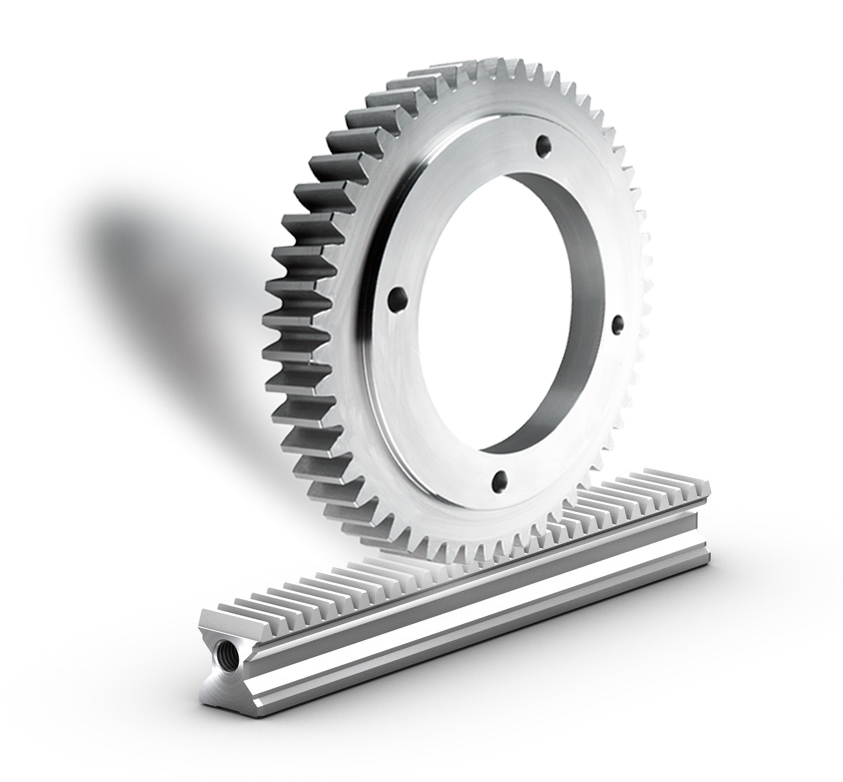Rack & Pinion
are utilised to convert rotating movement into linear motion. A gear rack has straight teeth cut into one surface of a square or round section rod with a pinion, which is a small cylindrical gear meshing with the gear rack. There are many ways to use gears. For example, as shown in the picture, a gear is used with the gear rack to rotate a parallel shaft.
Gears & Winches has many types of gear racks in stock. If the application requires a long length requiring multiple gear racks in series, we have racks with the tooth forms correctly configured at the ends. These are described as “gear racks with machined ends”. When a gear rack is produced, the teeth cutting process and heat treatment can cause it to try & go out of true. We can control this with special presses & remedial processes.
There are applications where the gear rack is stationary, while the pinion traverses and others where the pinion rotates on a fixed axis while the gear rack moves. The former is used widely in conveying systems while the latter can be used in extrusion systems and lifting/lowering applications.
As a mechanical element to transfer rotary into linear motion, gear racks are often compared to ball screws. There are pros and cons. The advantages of a gear rack is its mechanical simplicity, large load carrying capacity, no limit to the length, etc. One disadvantage though is the backlash. The advantage of a ball screw is the high precision and lower backlash while the shortcomings include the limit in length due to deflection.


